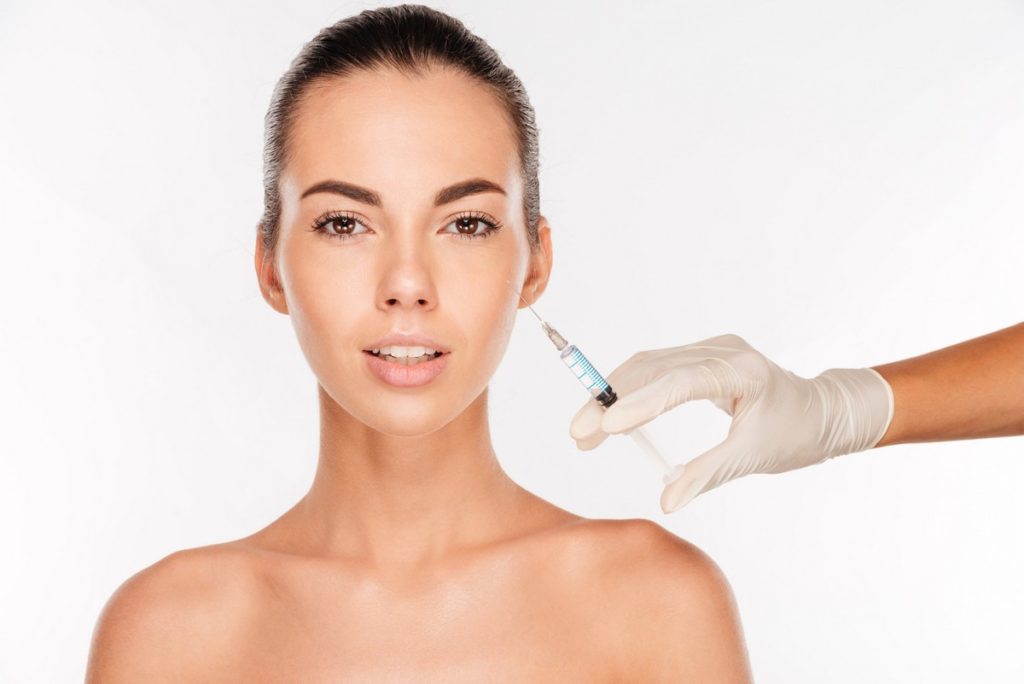
Since its introduction and approval in 2002, Botox® has become the number one cosmetic surgery procedure in the United States, according to the statistics of the American Society of Plastic Surgeons. This seemingly magic cure for deep-set frown lines and rugged furrowed brows is very popular among politicians and Hollywood actors. With its relatively low cost and long lasting effects, over 4 million people in the U.S chose Botox treatments in 2006 alone.
Botox is made of a sterile form of botulinum toxin, which is injected under the skin to deaden the nerve endings that cause wrinkles. When injected, the toxin inhibits the release of the chemical acetylcholine, which signals the muscles in your face to contract. Since those muscles are chemically paralyzed, they do not pinch the skin and cause wrinkles to form.
Even though Botox is made from a deadly toxin produced by Clostridium botulinum, it is relatively safe. The toxin itself is extracted from the live bacteria, and no live bacteria are injected into the skin. There is no chance of contracting botulism. Only small, localized doses of the toxin are administered during treatments, and the risks are relatively small.
The toxin treatment was first approved to treat blepharospasm (twitching eye muscles) in 1989. Cosmetically desirable effects of Botox were noticed when the frown lines between the eyebrows were observed to soften following treatment applied for eye muscle disorders. Subjects no longer had deep creases or folds of tissue near the areas where the injections were given.
These observations lead to clinical trials and subsequent FDA approval as a cosmetic application in April 2002. As of 2006, Botox injections are the most common cosmetic procedure in the United States.
Since Botox is not an injectable filler, but a chemical blocker, many wrinkle lines are not treated with Botox. Sun damaged skin and other wrinkles that are not caused by neuromuscular action are better treated with injectable fillers like collagen or Restylane.
The number of injections needed is based on the area being treated. Crow’s feet might only take from two to five injections whereas glabellar lines (furrowed brow) might take eight to ten injections. The injection sessions usually only take from ten to fifteen minutes of your time, and you can resume normal activities right away.
Like all medical treatment, Botox does have potential side effects.
Some of the side effects may include:
- Pain
- Bruising
- Redness
- Nausea
- Headache
- Ptosis (drooping of upper eyelid)
There is virtually no down time after a Botox injection treatment, you can resume a normal day as soon as you leave the physician’s office. Be careful not to rub or massage the treated area as this could cause the injected material to migrate to other areas. Full results are seen after a few days, and last up to six months. Re-injections are needed to maintain your new fresh appearance. Cosmetic Botox® injections should be given no more than once every three months.
It is important to find a doctor who has experience with Botox injections to minimize risks, and ensure proper dosing. Botox is delivered to the physician in dry form and must be reconstituted with the right amount of saline. Each vial of Botox is intended for one time use on a single patient.
A growing phenomenon around the country is the so-called “Botox parties” where a clinician will open up his clinic and basically throw a party. As the participants wait their turn for injection, they socialize and have fun. The FDA has issued warnings about these types of events as they can diminish the serious nature of the injections and their use. However, when compared to other cosmetic treatments, the complication rate of Botox is remarkably low. A recent campaign to put more severe warnings on Botox by the group Public Citizen, listed only one death from cosmetic treatment with the drug. Considering the millions of treatments performed annually, this represents a fraction of a tenth of a percent of a percent of risk.
For more information about Botox® and how to get careful treatments by professional experts and doctors, check out Solstice Med Spa.





